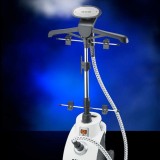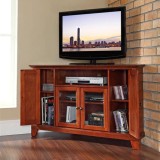How to Keep Food Warm Without Drying It Out
As a host or home cook, it's common to prepare food ahead of time to ensure a smooth and timely serving. However, keeping food warm for an extended period can often result in dried-out dishes that compromise both taste and presentation. To avoid this culinary dilemma, here are some essential techniques and considerations for keeping food warm without sacrificing its moisture:
Controlled Heat:
Direct heat sources, such as stovetops or warming trays, can quickly dry out food. Instead, opt for indirect heat methods that gently warm the food from all sides without overcooking it. Consider using a warming drawer, a slow cooker on the "keep warm" setting, or a lower oven temperature (around 200°F - 250°F) with a pan of water placed at the bottom to create a humid environment.
Covering the Food:
Trapping moisture is crucial for maintaining food's freshness and preventing dryness. Cover the dishes with lids, plastic wrap, or aluminum foil to create a barrier between the food and the surrounding air. If using plastic wrap, ensure it doesn't touch the food directly; instead, use a small piece of parchment paper or wax paper underneath to prevent sticking and condensation.
Hydrating the Environment:
Creating a humid environment around the food helps minimize moisture loss. Place a small bowl of water near the covered dishes or add a damp paper towel to the warming drawer. The evaporating water will create a moist atmosphere, keeping the food from drying out.
Monitoring Temperature:
Maintaining the food at the appropriate temperature is essential. Overheating can lead to dryness, while underheating may compromise food safety. Use a food thermometer to ensure the food remains within the recommended serving temperature range. Adjust the heat source accordingly to maintain the desired temperature.
Using Heat-Resistant Materials:
Selecting suitable cookware and serving dishes is crucial. Opt for heat-resistant materials like cast iron, stainless steel, or ceramic that can retain heat effectively without scorching the food. Avoid using thin or lightweight containers that may cool down quickly, leading to uneven heating and potential dryness.
Resting Time:
After cooking, allow the food to rest for a short period before serving. This resting time allows the juices to redistribute within the dish, resulting in a more evenly moist and flavorful result. Cover the food loosely during this resting period to prevent moisture loss.
By following these practical tips, you can keep your culinary creations warm and inviting without sacrificing their delicious moisture. Whether it's a Thanksgiving turkey or a hearty casserole, these techniques will help you serve delectable dishes that delight your guests and showcase your culinary skills.

4 Ways To Keep Food Hot Wikihow

Oven Temp To Keep Food Warm Without Drying Out Izzycooking

4 Ways To Keep Food Hot Wikihow

How To Really Keep Food Warm In The Oven 2024

How To Keep Appetizers Warm 10 Ways Cupcakes And Cutlery

How To Keep Food Warm In The Oven Before Serving Kitchenaid

How To Keep Food Warm In The Oven Before Serving Kitchenaid

4 Ways To Keep Food Hot Wikihow

How To Keep Food Warm In The Instant Pot Margin Making Mom

How To Keep Food Warm In A Lunch Box Instacart








